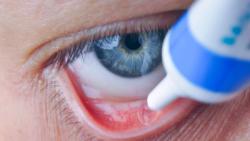Editor’s Note: This article was published in Pharmaceutical Technology Europe’s February 2023 print issue.

OR WAIT null SECS
- About Us
- Advertise
- Contact Us
- Editorial Info
- Editorial Advisory Board
- Do Not Sell My Personal Information
- Privacy Policy
- Terms and Conditions
© 2025 MJH Life Sciences™ , Pharmaceutical Technology - Pharma News and Development Insights. All rights reserved.
Improving Gender Diversity
Although some headway is being made into more gender-diverse executive levels in pharma, much more work is still needed.
Gender equality and diversity is an issue that has been more prevalent in discussions and considerations across the professional landscape over recent years. For women, striving to reach the top positions in company boardrooms or even advancing up the career ladder can be a seemingly insurmountable task, with many prejudices and obstacles still causing problems.
As 11 February marked the passing of another annual observance of the United Nations’ International Day of Women and Girls in Science—which aims at promoting female participation in science, technology, engineering, and mathematics subjects and careers (1)—it seemed pertinent to review how the pharmaceutical industry stands up in the global scale of gender diversity in the upper corporate echelons.
According to the 2021 Gender Diversity Index (a study of 668 companies, produced by the non-profit Brussels-based organization, European Women on Boards), the healthcare and pharma sector has a gender diversity index (GDI) value of 0.61. This value means the industry ranks third out of eight sectors that were specified by the analysts in the study and is an improvement from the 2020 ranking, when the sector only reached fifth and had a GDI of 0.56 (2).
The top three companies for the healthcare and pharma sector were GN Store Nord, a telecommunications and hearing instruments business based in Denmark; MorphoSys, a biopharmaceutical company from Germany; and AstraZeneca, a research-based biopharma company based in the United Kingdom. Of these three companies, only one (GN Store Nord) has a female CEO and none have women as chairs of the board (2).
Sadly, progress in gender diversity at the top levels across all industry sectors has been slow going. As alluded to by Jane Kennedy, chief business officer of Discovery Park in Kent, UK, the difficulties within the science sectors not only lie in getting girls attracted to the subject matter to begin with but also in preventing women from quitting a science-based career once they have gotten through the door. This latter problem is particularly challenging when women realise there is a significant pay gap between them and their male counterparts (3).
Further change is needed! Diversity needs to improve with more speed than has been happening in recent times, not least of all to comply with new European Union rules (4) but also to ensure innovation and market growth can be unlocked—something that is possible through diverse leadership (5).
References
1. UN. International Day of Women and Girls in Science, 11 February. UN.org/en/observances/women-and-girls-in-science-day (accessed 9 Feb. 2023).
2. EWOB. Gender Diversity Index of Women on Boards and in Corporate Leadership. 2021 Report (January 2022).
3. Kennedy, J. Bench to Boardroom—Why Can’t Women Make the Leap? BIA Blog, 9 Feb. 2023.
4. Council of the EU. Council Approves EU Law to Improve Gender Balance on Company Boards. Press Release, 17 Oct. 2022.
5. Hewlett, S.A.; Marshall, M.; Sherbin, L. How Diversity Can Drive Innovation. Harvard Business Review December 2013.
About the author
Felicity Thomas is the European/senior editor for Pharmaceutical Technology Group.
Article details
Pharmaceutical Technology Europe
Vol. 35, No. 2
February 2023
Page: 6
Citation
When referring to this article, please cite it as Thomas, F. Getting Personal. Pharmaceutical Technology Europe 2023 35 (2) 6.

 Download Issue: Pharmaceutical Technology, February 2023
Download Issue: Pharmaceutical Technology, February 2023

